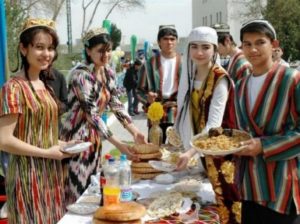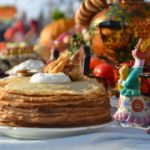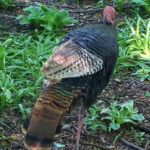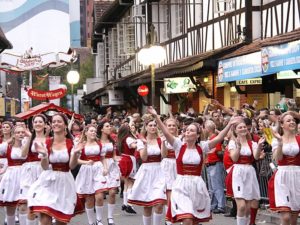Nowruz
 Every nation has its own customs and traditions. But the most vivid and memorable for all is the meeting of the New Year. People of different countries celebrate the beginning of the year in different numbers. In the Muslim countries of Asia, its celebration begins on March 21 – the day of the spring equinox. This holiday is called Navruz Bayram.
Every nation has its own customs and traditions. But the most vivid and memorable for all is the meeting of the New Year. People of different countries celebrate the beginning of the year in different numbers. In the Muslim countries of Asia, its celebration begins on March 21 – the day of the spring equinox. This holiday is called Navruz Bayram.
Nowruz in translation from Farsi means New Day. The first mentions of this day are found in manuscripts describing the era of Zoroastrianism. Thus, in the sacred book of Zoroastrianism “Avesta” it is described in detail about Navruz. Already in the 3rd millennium BC, Navruz was one of the most important public holidays. Time passed, religions changed, Zoroastrianism gave way to Islam, and the holiday of Navruz Bayram continued to be celebrated in many cities and countries.
I wonder why the celebration of Nowruz falls on March 21? March 21, the length of day and night is equal in time. On the day of the spring equinox, field work begins. Nature awakens from hibernation. Buds appear in the trees, flowers bloom, and animals and people rejoice in the onset of warm and sunny days.
In Navruz, ubiquitous celebrations are held with performances by famous artists and folk art groups. At the stadiums held sports horse racing. According to folk tradition, goat-hunting is arranged. How many emotions you will see on cockfighting and dog fights! The performances of archers and strongmen batyrs are beautiful and interesting. Strengths not only compete with the national wrestling, but also compete in weight lifting, arm wrestling, and tug-of-war. Exhibitions of folk artisans fascinate look. No beautiful tourist returns home without beautiful souvenirs based on folk traditions. And how amazing is the embroidery of local needlewomen, embossing, paintings on the skin, and ceramic items that vividly reflect the plots of popular life!
In Navruz Bayram is preparing many delicious dishes of national cuisine. The main feature of the festive table is a truly spring meal Sumalak. Cooking this dish is necessary in advance. 7 days before the holiday, wheat grains are soaked in a shallow dish for germination. By sprouts, you can predict what the crop will be this year. If the shoots are long, then the crop will be rich in the fields.
Then sprouted shoots pounded in a metal mortar. Pour all the water and add flour. Boil the resulting mass is necessary for 10-12 hours, stirring constantly. So that Sumalak does not burn, small pebbles or walnuts are added to the cauldron. Gradually, the brew becomes thick, brown in color and sweet to the taste. Although sugar in the cooking process is not added. Cook a traditional dish Nowruz exclusively women. It is believed that the more you distribute Sumalak, the more happiness will come to the house. Eating this dish, you must certainly make a wish. It is believed that it will come true. And if you get pebbles or a nut, then you will be ranked among happy people.
There are many legends associated with the celebration of Navruz. An interesting legend about the creation of Sumalak. It is said that one widow had many children. In the spring, the food ran out, and the children asked for food. When the woman came into the pantry, she saw that the spilled wheat grains had sprouted. Mother brought sprouts to the house. I decided to pound them and stop cooking in water. But the tasty food did not work, to deceive the children, the mother said that in the morning she would feed them, and now she had to go to bed. All night the woman was disturbed by the brew, with the gloom ready to admit defeat, until she fell asleep. In the dream, she saw the Angel, who said that it was time to remove food from the fire and give the children the resulting Sumalak. The widow woke up and tried her culinary creation. It turned out that the food was sweet, nourishing, had the ability to raise the immune system and give vigor. Since then, all the houses began to prepare this healthy dish.
Another festive dish is Halisa. It is made from lamb or beef meat. Halis men are cooked for as long as 12 hours, gradually adding barley groats to the meat.
Pie “kok-samsa”, which is stuffed with early spring green spinach, clover, shepherd’s bag, mint, quinoa and other stems of steppe plants. For sweets served nishaldu.
Nishalda is a dessert of whipped egg whites with sugar and the addition of fragrant roots of herbs, most often licorice. They put on the table 7 items that start with the Persian letter Xing: sumalak, apples, fresh herbs, vinegar, sea buckthorn berries, sumac, garlic. And 7 items starting with the letter Shin: sugar, milk, syrup, rice, honey, wine, candy.



























